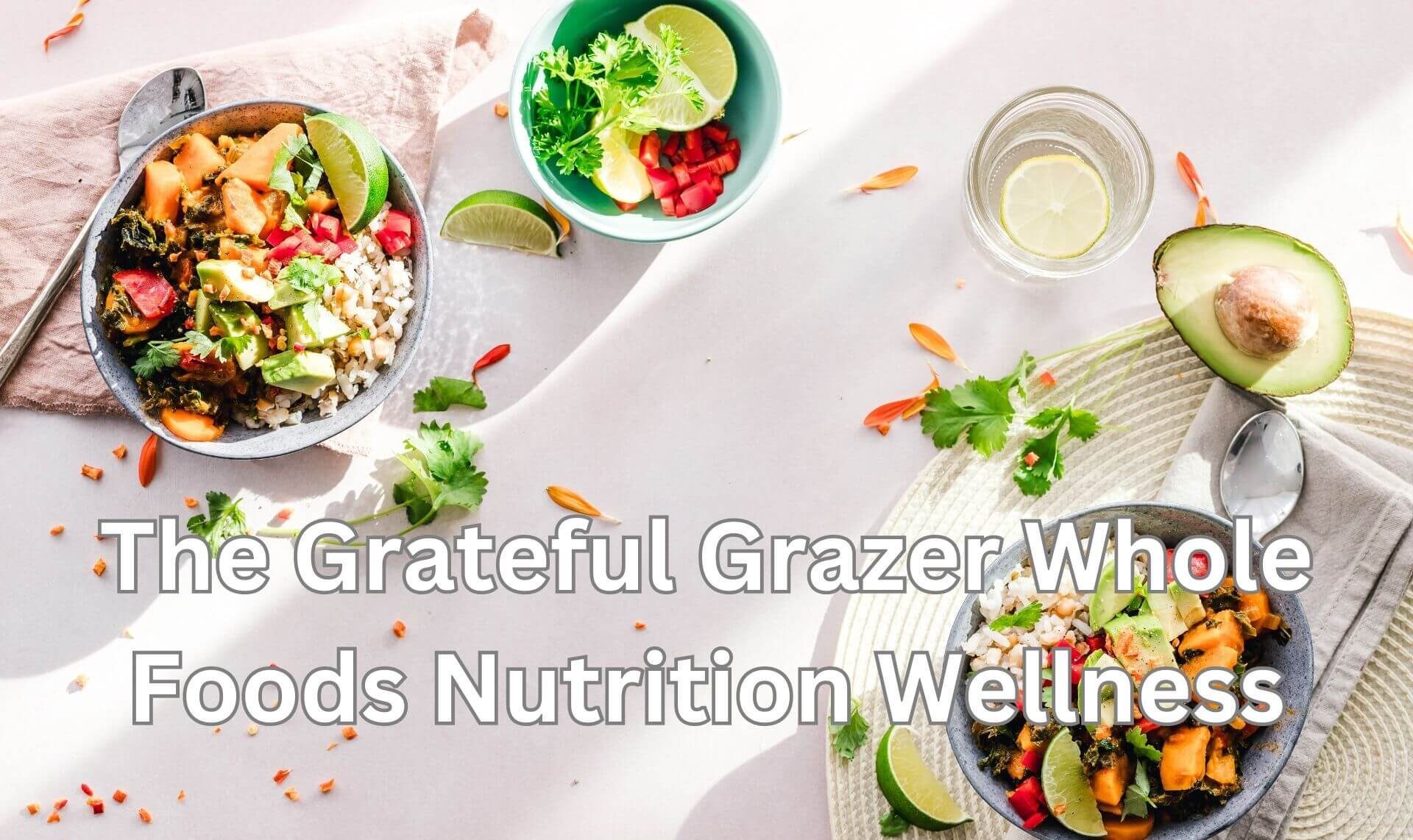Whole foods shine as a beacon of true sustenance in a modern culture that frequently puts convenience above health. Whole foods are more than just a term; they represent a lifestyle choice that values pure goodness. We go on a voyage into the realm of whole foods in this complete book, understanding their essence, unraveling their significance for nutrition and wellbeing, diving into their plethora of advantages, and smoothly incorporating them into your regular dietary patterns.
- What Are Whole Foods and Why Do They Matter?
- The Multitude of Benefits Offered by Whole Foods
- How to Transition to a Whole Foods-Based Diet
- Whole Foods Shopping Tips
- 10 Nourishing Whole Food Recipes to Try
- #1. Chickpea and Roasted Veggie Bowl
- #2. Black Bean Enchilada Casserole
- #3. Lentil and Sweet Potato Coconut Curry
- #4. Quinoa Breakfast Bowl
- #5. Mason Jar Overnight Oats
- #6. Veggie Stir Fry with Tofu or Chicken
- #7. Sheet Pan Salmon with Asparagus
- #8. Greens and Grain Bowl
- #9. Greek Yogurt Parfait
- #10. Tuna Salad Lettuce Wraps
- Wrapping Up
What Are Whole Foods and Why Do They Matter?
Whole foods are nature’s unspoiled wealth. They are the Earth’s pristine, unfiltered offerings, filled with goodness. Whole Foods is delightfully honest in a world where labels sometimes conceal more than they disclose. You get exactly what you see.
These foods have deep roots in the plant kingdom and are a gift from the Creator. Whole food nutrition’s heroes include fruits, vegetables, whole grains, legumes, nuts, and seeds. They go far beyond simple nourishment since they are brimming with all the nutrients your body longs for, including fiber, vitamins, minerals, and antioxidants.
You may be wondering why whole foods are so important. The explanation is simple: they’re not simply a trendy option; they’re the foundation for a well-nourished existence. These natural treasures are brimming with the nutrients your body needs; they’re nature’s greatest gift to your health and well-being.
Whole foods are more than simply a food category; they represent a way of life, a philosophy, and a strong decision. They provide your body with the nutrition it requires, keep you full and content, and contribute to your general well-being.
By eating whole foods, you are making a conscious decision to provide your body with the finest that nature has to offer. They are more than simply a meal; they are a whole approach to wellness.
So, whether you’re eating a delicious apple, a robust salad, or a handful of almonds, remember that you’re fueling your body with the essence of entire foods, and that’s something very wonderful.
The Multitude of Benefits Offered by Whole Foods
– Improved Digestion
Unlocking a trove of digestive benefits, whole foods help your body absorb nutrients more effectively. The natural fiber content in fruits, vegetables, whole grains, legumes, nuts, and seeds promotes healthy digestion and bowel movements.
– Heart Health
By assisting in lowering LDL (bad) cholesterol levels, whole foods act as the guardians of your cardiovascular wellness. Their fiber content binds to cholesterol in the digestive tract, promoting its elimination from the body.
– Disease Prevention
The myriad nutrients in whole foods, like antioxidants and phytochemicals, hold the key to reducing the risk of many chronic diseases. They present you with a shield against the perils of modern lifestyles by fighting inflammation and oxidative stress.
– Weight Management
With their powerful combination of fiber, protein, and healthy fats, whole foods promote satiety and help regulate blood sugar levels. This supports healthy weight management and combats cravings for processed and sugary foods.
– Energy Levels
Whole foods contain B vitamins, iron, magnesium, and other nutrients that are intrinsic energy-boosting properties. They contribute to an enhanced sense of wellness and vitality, putting a spring in your step.
– Overall Wellness
Picture a life where digestion flows effortlessly, cholesterol retreats, chronic diseases find themselves at bay, and weight loss becomes a reality. This vivid tapestry of benefits is precisely what whole foods offer through their nutritional excellence.
How to Transition to a Whole Foods-Based Diet
Shifting to a whole foods-focused diet doesn’t have to be complex or overwhelming. With some simple guidelines, it can be an exciting journey of small, sustainable changes that make a profound difference in your health.
The Half-Plate Rule
Make non-starchy vegetables and fruits the stars of your meals by filling half your plate with them. Enjoy the rainbow – make sure to incorporate a variety of colorful produce to maximize phytonutrient intake.
Choose Whole Grains
Replace refined, processed grains with energizing whole grains like brown rice, quinoa, buckwheat, oats, millet, and amaranth. Enjoy them at meals and also as healthy snacks when you need an energy boost.
Power Up with Legumes
Bring legumes like beans, lentils, chickpeas, and peas to the table at least 2-3 times a week. They are budget-friendly protein and fiber all-stars. Enjoy them in soups, stews, salads, sides, dips, and more.
Snack on Nuts and Seeds
Curb mid-day cravings by snacking on a handful of unsalted nuts or seeds. Almonds, walnuts, pistachios, pumpkin seeds, sunflower seeds, and hemp hearts make satisfying, nutritious snacks.
Focus on Lean Proteins
Center your main dishes around plant-based proteins like beans, lentils, and tofu, along with lean animal proteins like fish, skinless poultry, eggs, and low-fat dairy. Limit red meat to once a week or less.
Minimize Processed Foods
Limit foods like frozen meals, packaged snacks, refined oils, and sweets that are heavily processed. Always check the label and avoid anything with additives you don’t recognize or can’t pronounce.
Drink Water and Herbal Tea
Stay hydrated and avoid empty calories from sugary drinks by drinking plenty of water, sparkling water, or unsweetened herbal teas. Add lemon, mint, ginger, or fruit for natural flavor.
Whole Foods Shopping Tips
Embarking on a whole-food diet makes your grocery store trips even more exciting. With the right strategies, you can fill your cart with the most nutritious ingredients nature has to offer.
Shop the Perimeter
Spend most of your time walking the outer aisles of the store – that’s where you’ll find whole food treasures like produce, lean proteins, eggs, and dairy. Venture into inner aisles just for staples like nuts, seeds, beans, and whole grains.
Seek Out Farmers’ Markets
Visit local farmers’ markets when possible to get the freshest produce straight from the source. You’ll find a colorful bounty of fruits and veggies that scream with flavor and nutrition.
Know What’s In Season
Choose foods that are at their seasonal peak for optimal freshness, taste, and nutritional quality. In-season produce is also generally more affordable.
Read Labels
Get in the habit of reading nutrition labels to avoid heavily processed “health foods” masquerading as whole foods. Seek items with short, simple ingredient lists.
Opt for Frozen
Keep frozen fruits and veggies on hand for smoothies, sides, and more. Produce is flash-frozen at peak ripeness, retaining nutrients. Prioritize plain over sauced or seasoned.
Don’t Shop Hungry
Shop after eating a meal or snack so you avoid impulsive cravings and junk food temptations. Shopping full helps you stick to your whole foods list.
10 Nourishing Whole Food Recipes to Try

One of the most rewarding parts of embracing a whole foods lifestyle is exploring new flavors and dishes that celebrate nature’s bounty. These nutritious recipes make it delicious and fun.
#1. Chickpea and Roasted Veggie Bowl
Chickpeas, your plant-based protein star, is served over a rainbow of roasted vegetables and greens for the ultimate nourishing bowl.
#2. Black Bean Enchilada Casserole
All the flavors of enchiladas in easy casserole form, packed with protein-rich black beans, vegetables, seasonings, and melted cheese.
#3. Lentil and Sweet Potato Coconut Curry
Warm up with hearty lentils and sweet potatoes in an aromatic coconut curry sauce. A complete vegetarian meal in one pot!
#4. Quinoa Breakfast Bowl
Start your day energized with a hearty breakfast bowl featuring quinoa, fresh fruit, nuts, milk, and a drizzle of honey.
#5. Mason Jar Overnight Oats
Customize these grab-and-go overnight oats with your favorite fruits, nuts, seeds, and milk for effortless morning nutrition.
#6. Veggie Stir Fry with Tofu or Chicken
Fire up this rainbow veggie stir fry with slices of pan-seared tofu or chicken breast for a quick, protein-packed dinner.
#7. Sheet Pan Salmon with Asparagus
Roasted salmon with lemon and herbs paired with crisp asparagus spears for a sheet pan dinner bursting with nutrients.
#8. Greens and Grain Bowl
Mound up your favorite greens and roasted veggies over quinoa or brown rice for the perfect weekday lunch bowl.
#9. Greek Yogurt Parfait
Layer vanilla Greek yogurt with fresh berries, seeds, nuts, and a swirl of honey for a monumental breakfast or snack.
#10. Tuna Salad Lettuce Wraps
Tuck a flavorful tuna salad enhanced with celery, lemon juice, and Dijon mustard into crisp lettuce wraps for a light lunch.
Wrapping Up
As you’ve navigated The Grateful Grazer’s guide to whole foods, you’ve unearthed the essence and significance of these nutritional powerhouses. From comprehending their nature to embracing their benefits, this guide lays out a roadmap to vibrant health and nourishment. It celebrates ingredients that nourish your body from the inside out. While the journey requires some adjustments, each step brings you closer to your healthy, happy self. Focus on making progress, not perfection. Celebrate the small changes that add up to a better you. Ready your mind, body, and kitchen for the adventure of a lifetime.











